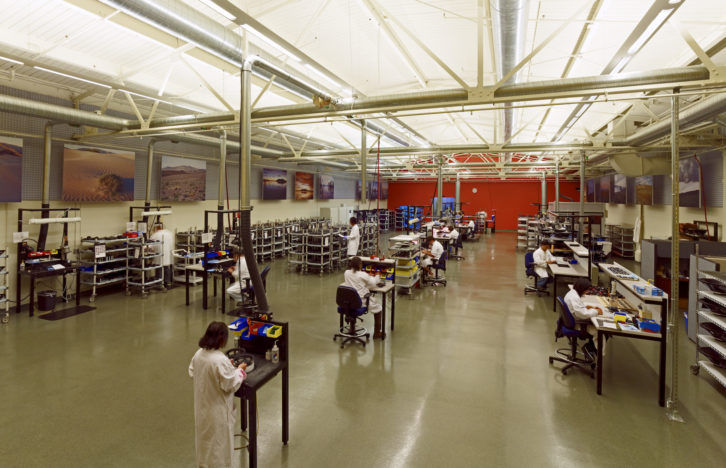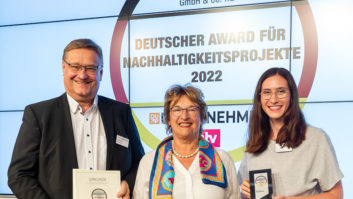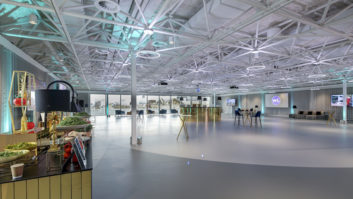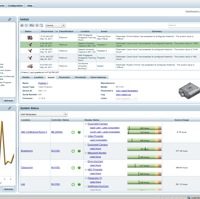
It would have been difficult not to register the way in which the use of environmental terminology has begun to shift over the past year or two. Increasingly, ‘climate change’ has started to give way to ‘climate crisis’ or ‘climate catastrophe’ as evidence mounts to the effect that we are swiftly approaching the point of no return.
Not before time, this is leading to more widespread action at a government level, as well as in business and industrial circles. For example, the UK recently became the first major economy to commit to ‘net zero’ emissions by 2050, and detailed plans on how this might be achieved are in the process of being developed. The Royal Institute of British Architects (RIBA) is one of the most prominent organisations to have expressed support for the plan and is now shaping an action plan to implement more sustainable standards and practices.
In this context, the feeling that manufacturers need to review their processes and minimise the environmental impact of the entire lifecycle of their products has never been stronger. In professional AV this has already led to some notable individual commitments by manufacturers – more of which anon – as well as the introduction of products that satisfy initiatives such as US energy efficiency programme Energy Star.
This article will look at the impact of some of these developments, along with the potential for pro AV’s global footprint to be substantially reduced. But we start with one of the most fundamental questions: how much do green issues now inform customer decisions, and to what extent is this awareness informing current R&D work in the industry?
Energy efficiency
The consensus view among the manufacturers who spoke to Installation is that interest in green AV solutions is now growing sharply. But with the potential of many such solutions to reduce energy expenditure, it is not necessarily possible to determine whether the motive of customers is environmental, financial or a combination of the two.
Colin Farquhar, CEO of Exterity, remarks: “We are seeing prospective customers in various regions increasingly placing a premium on energy efficiency when looking for an AV solution, but whether green considerations or cost-effectiveness is the primary impetus is often not obvious. What is clear now is that we are regularly seeing new customers enquire about the Energy Star label or equivalent in the early stages of a project across markets in EMEA.”
In terms of geography, “the situation in Asia-Pacific is similar to Europe – we have some customers that are keen to understand how green Exterity’s products are, and if [they] can help them achieve their business goals. Interestingly, we are also seeing that in some areas where businesses target their consumption and electricity is at a premium, such as South Africa, they don’t often ask about our green AV credentials.”
Casio’s national account manager, Alan Garratt, echoes these sentiments about enhanced interest in the potential of green AV. “End users are becoming increasingly aware of both power consumption and wastage associated with electrical products as well as recycling and disposal issues surrounding them,” he says. “We’ve made it part of our strategy to encourage end users to look at total cost of ownership, as well as power consumption, to understand that variable specifications have an effect on the product’s lifespan.”
“We are seeing prospective customers in various regions increasingly placing a premium on energy efficiency when looking for an AV solution”
Colin Farquhar, Exterity
The meaning of green
To date it would be fair to say that the lion’s share of promotional activity around green AV products has centred around the lowering of energy consumption. But increasingly, there is an awareness that many other factors do come into play. For example, there is the whole issue of the production process; if components for a product are being sourced from multiple nations and assembly is then taking place in another country, the carbon footprint of its production process will potentially be significant. And at the other end of the product narrative, so to speak, there is the issue of disposal and recycling – rarely straightforward with electronics products.
Reflecting on the professional projector business, Garratt confirms that “the key for the end user is the power consumption and the consumables involved in the operation of the product. The laser and LED light source never need replacing as it produces the same level of brightness across the lifespan of the projector itself. This is a massive saving on manufacturing as previously lamps and filters might need changing every few months if used regularly.”
He adds that “recycling is key, and electronics are notoriously tricky to recycle, which is why we offer a recycling service. Unfortunately, across the board our electronics are made in Japan, Korea and China, among other Asian countries, which means shipping is a real issue which everyone is looking at ways to address. Projectors are becoming smaller and lighter, which goes some way to start addressing the freight issues but there is a long way to go.”
As well as the power consumption issue, Farquhar says that “there are a number of elements organisations must consider in order to be able to offer ‘greener’ solutions, and at Exterity we make every effort to protect and improve the environment in all areas of our operations. [For instance] we work continuously to decrease our use of energy and materials, and to decrease the amount of waste we generate, recycle waste that is generated, and properly dispose of waste that cannot be recycled. This continuous process results in small but significant changes in all areas annually.
“We also ensure that we work in partnership with contractors, suppliers and other third parties to encourage continuous improvement in environmental performance and practices.”







